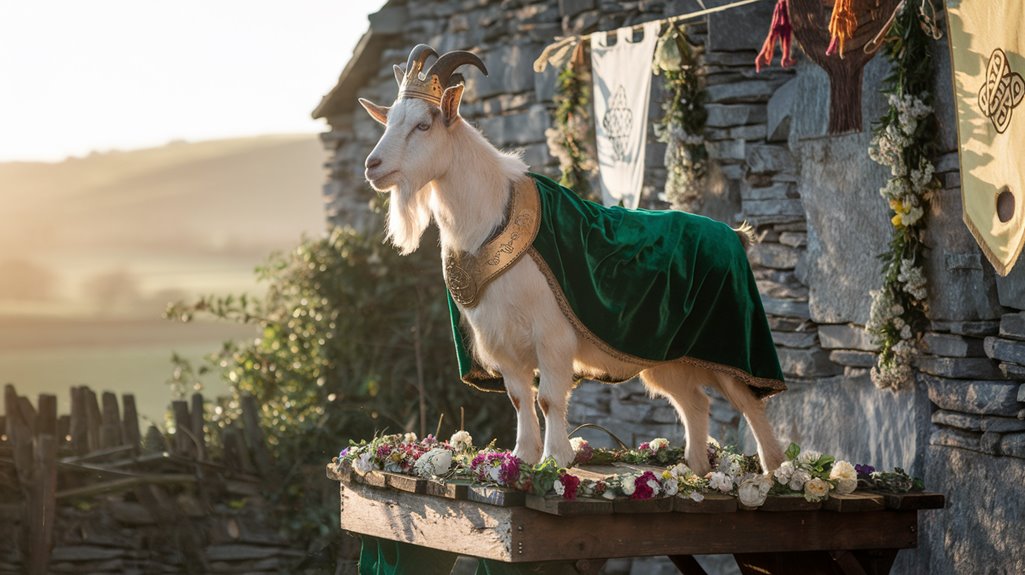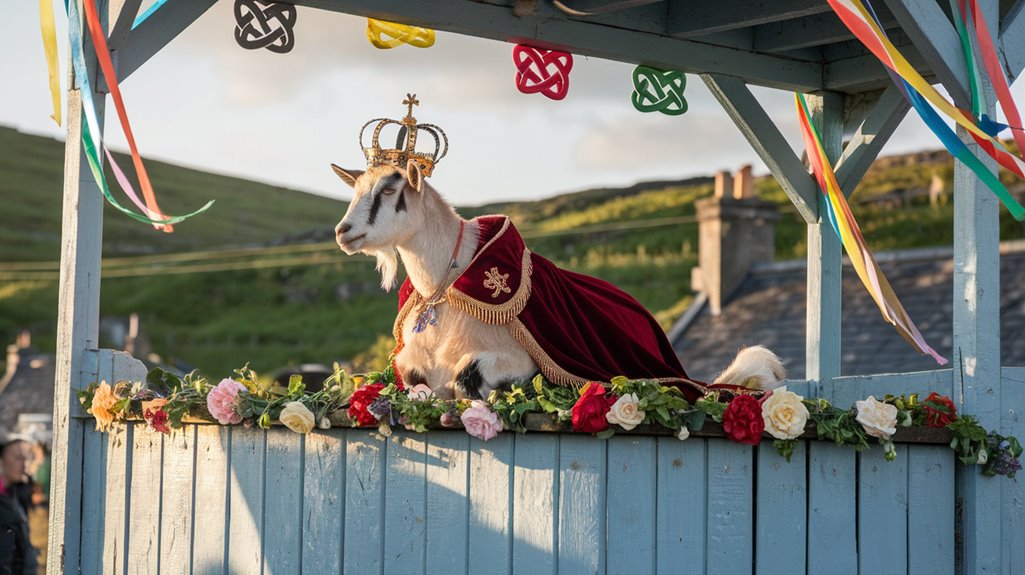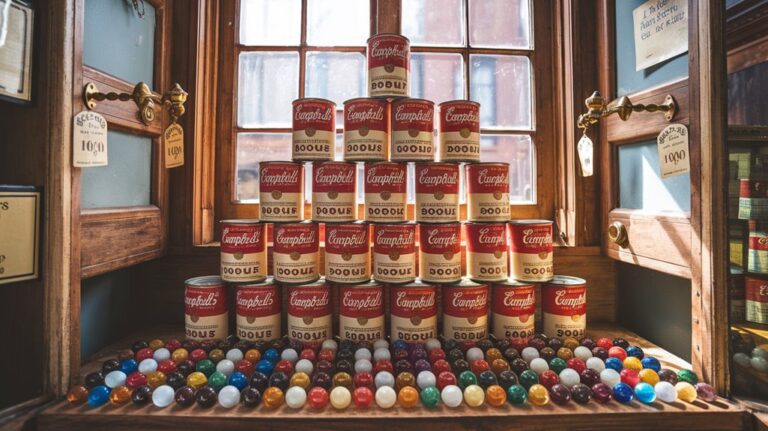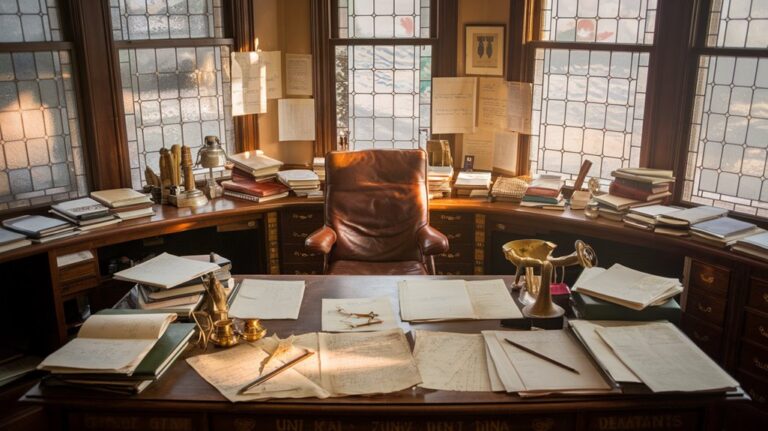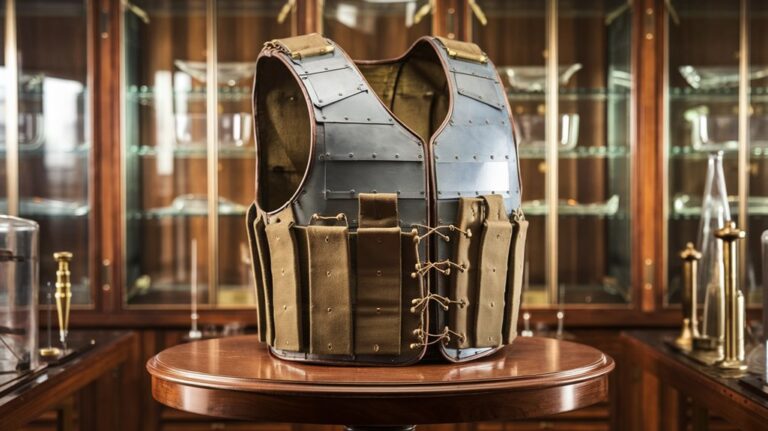An Irish Festival Crowns a Goat as King
You've probably heard of unusual festivals, but Ireland's Puck Fair takes eccentric celebrations to new heights. In the charming town of Killorglin, locals don't just party—they capture a wild mountain goat and crown him king for three days. While it might sound like a tale you'd hear after too many pints at the pub, this centuries-old tradition draws massive crowds and showcases Ireland's remarkable ability to preserve its pagan past in modern times.
The Legend Behind Puck Fair's Royal Goat
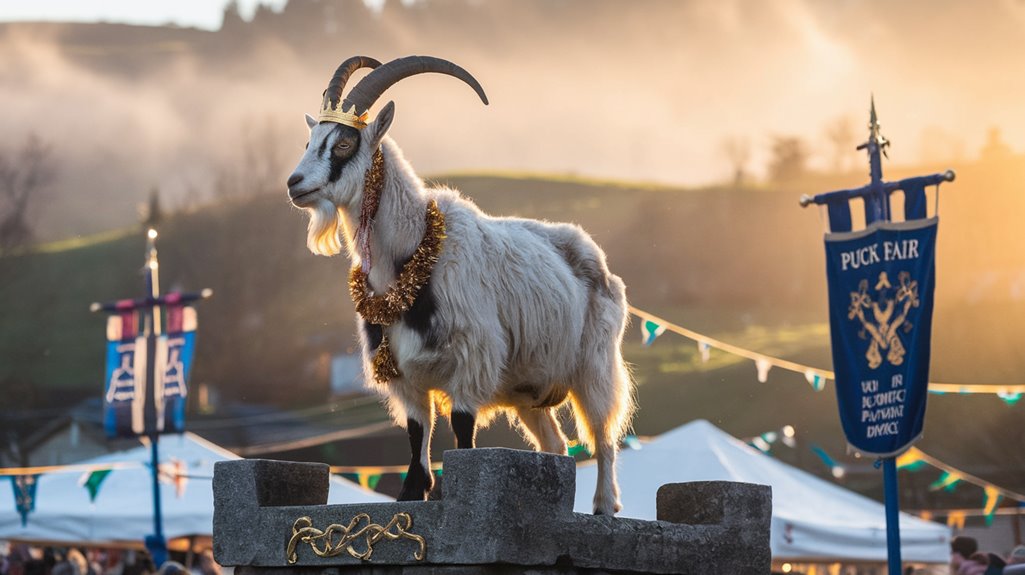
While many festivals boast unique traditions, Ireland's Puck Fair stands out for its fascinating origin story that blends pagan roots with historical legend.
You'll find that goat symbolism runs deep in this celebration, dating back to Celtic fertility rites during the harvest festival of Lughnasa.
The historical significance of this festival took a dramatic turn in the 17th century when, according to legend, a goat warned townspeople of Oliver Cromwell's advancing army.
This tale, combined with the fair's ancient pagan origins where goats were once sacrificed, helped shape the modern celebration.
In 1613, King James I officially recognized the festival through a royal charter, cementing its place in Irish culture.
Today, instead of sacrifice, you'll see the goat treated like royalty before being safely returned to the wild. A young local school girl, chosen as the Queen of Puck, has the honor of crowning the wild goat as king. Every year, the festival draws over 80,000 visitors to the town of Killorglin.
Ancient Celtic Roots Meet Modern Celebrations
Although rooted in ancient Celtic traditions dating back to the festival of Lughnasa, today's Puck Fair seamlessly blends its pagan heritage with modern celebrations.
You'll find Celtic symbolism throughout the three-day event, particularly in the central figure of the goat king, which represents ancient fertility rites and agricultural traditions. This spectacular fair was granted official status by King James I in 1610.
While preserving its historical essence, the fair has evolved to meet contemporary standards. The celebration attracts over 100,000 attendees each year.
You can now experience a vibrant mix of old and new: traditional livestock trading alongside modern music trails, and ancient harvest celebrations paired with spectacular fireworks displays.
The festival's ability to adapt while maintaining its cultural core has made it a global attraction, drawing visitors worldwide who want to witness this unique fusion of Ireland's pagan past with its dynamic present.
Three Days of Festival Magic
When you step into Puck Fair, you'll experience three magical days packed with distinct traditions and celebrations. Your journey begins on Gathering Day, where you'll witness the historic horse fair and the crowning of King Puck, a wild mountain goat transformed into royalty. The goat's unique horizontal pupil shape helps him maintain awareness of his surroundings during his elevated reign.
The festival activities peak during Fair Day, as you explore bustling street markets filled with local crafts, jewelry, and livestock auctions. You'll find yourself swept up in the community engagement through talent contests, storytelling sessions, and traditional Irish music that fills the pubs until 3 AM. A local primary school girl is chosen to serve as the Queen of Puck, adding a charming touch to the festivities.
The grand finale arrives with The Scattering, where you'll join the crowd to bid farewell to King Puck. Watch as he's paraded through town one last time before being released back into the MacGillycuddy Reeks, with fireworks lighting up the night sky.
A Wild Mountain King's Journey
Deep in the rugged MacGillycuddy's Reeks mountain range, a wild mountain goat's remarkable journey to royalty begins each August.
You'll witness a centuries-old tradition as locals venture into the mountains to catch this year's chosen king, a practice steeped in goat symbolism dating back to pre-Christian Ireland.
The festival origins blend fascinating tales, from a heroic goat warning villagers of Cromwell's army to ancient Celtic harvest celebrations honoring the pagan god Pan.
Once captured, the wild goat transforms into festival royalty when a local schoolgirl, dubbed the Queen of Puck, places the crown upon its head.
After its brief reign atop a special stand in Killorglin, where thousands gather to pay homage, the goat returns to its mountain domain, continuing a tradition that's enchanted visitors since 1613.
The celebration unfolds over three days in August, from the Gathering to the final Scattering when the goat's reign concludes.
Where Tradition and Tourism Collide
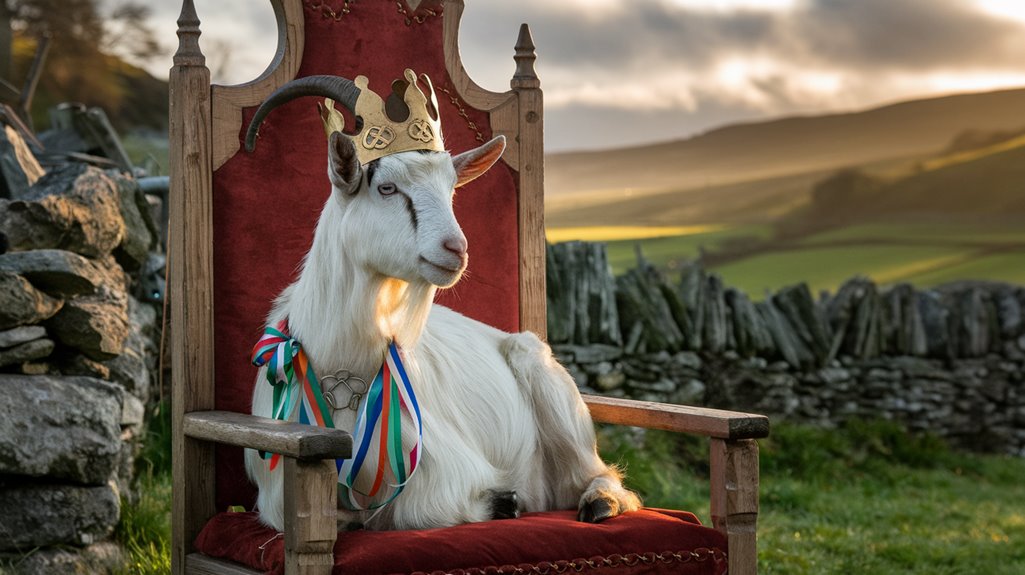
Today, the Puck Fair stands as Ireland's remarkable fusion of ancient tradition and modern tourism, drawing over 80,000 visitors annually to the small town of Killorglin.
You'll find this centuries-old festival has evolved while maintaining its cultural preservation efforts. The event still features its iconic horse fair and traditional ceremonies, but now includes 36 hours of free entertainment ranging from music to street theatre.
The tourism impact extends beyond mere numbers – it's become a significant economic driver for the region, with visitors from Australia, the UK, and US participating in the festivities.
While adapting to modern times, especially regarding animal welfare practices, the fair hasn't lost its authentic charm. Local schoolchildren still participate as festival royalty, ensuring this ancient Celtic celebration continues to bridge past and present.

